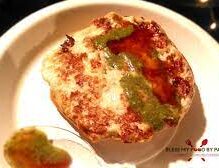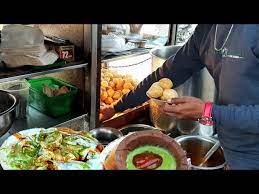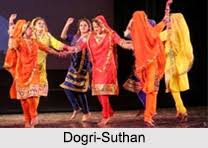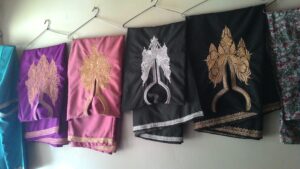- Umang Sagar
- Place, Recent article
The Culture Of Jammu And Kashmir
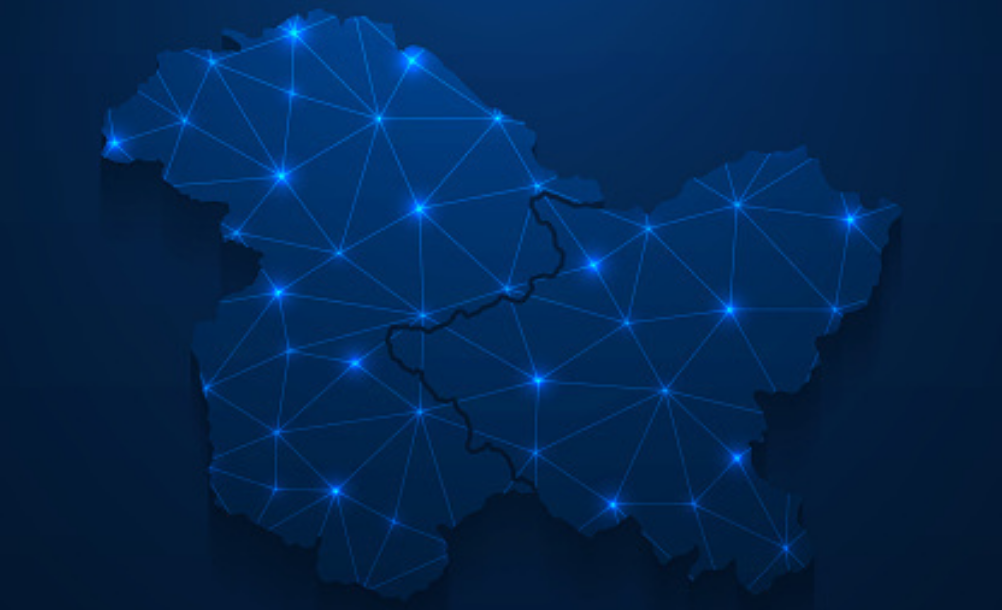
Location
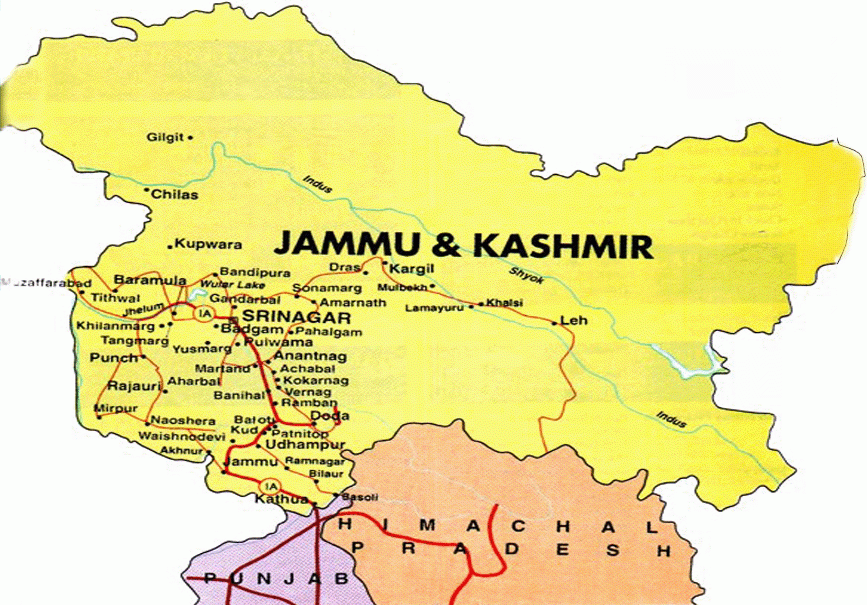
- Jammu and Kashmir is an Indian administered region situated in the northwest of India in the Himalayan Region constituting the southern and south-eastern portion of the LARGER KASHMIR REGION, which has been the subject of a dispute between INDIA, PAKISTAN, and CHINA since the mid-20th century.
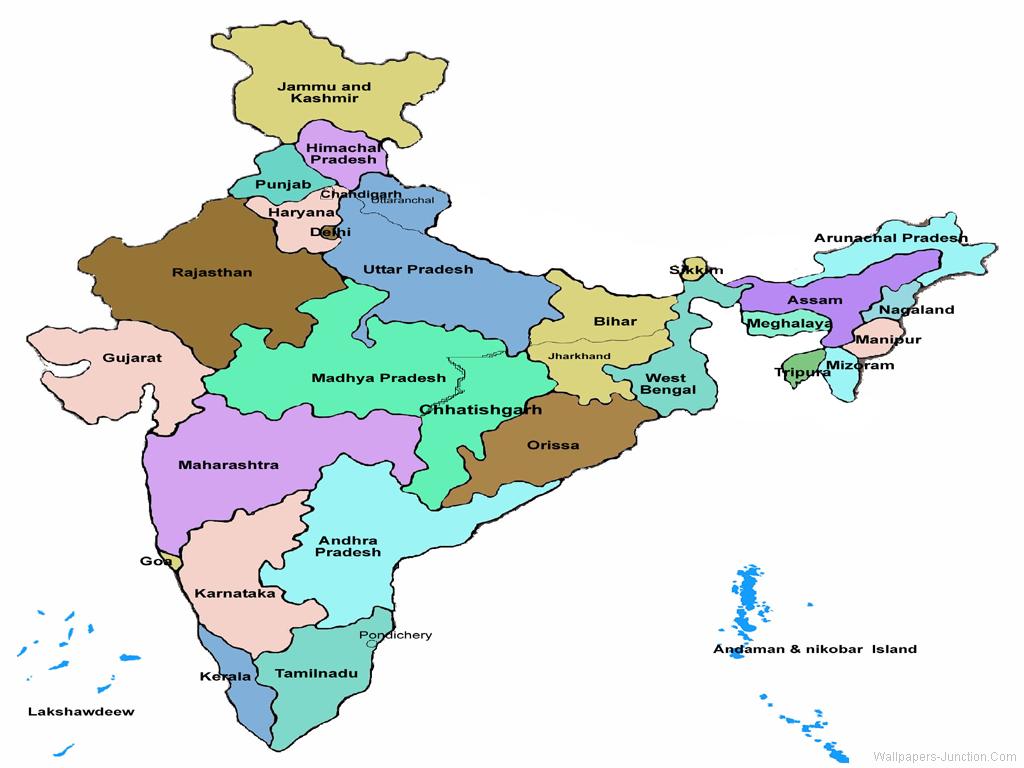
➣ Jammu and Kashmir [ Indian administered] shares boundaries with the Pakistan administered portion of THE LARGER KASHMIR REGION referred to as ‘Azad Kashmir’ by Pakistan and Pakistani sources and ‘Pakistan occupied Kashmir [P.O.K]’ by the Indian government and Indian sources in the west, with Gilgit-Baltistan [ the Pakistani territory formerly known as the ‘Northern Areas’ ] in the north, with the disputed area of Aksai Chin [now administered by china ] in the north-east, and in the east with the Autonomous Region of Tibet, and in the south with the Indian States of Punjab and Himachal Pradesh.
History
Kashmir :-
➣ In the first half of the Golden age Buddhism flourished in the Kashmir region and later in the ninth century, Shaivism (Hindustan) arose which lead to a major decline of Kashmiri Buddhism. Moreover, during the era of the Hindu king Mihirakula, Buddhists were massacred and Shaivism glorified while the Buddhist influence got banished.
➣ Kashmir then witnessed another religion glorifying in the form of Islam during the 13th to 15th century via Sufi saints who came to Kashmir from lands like Iran, Bagdad, etc which led to an impact decline of the Kashmiri Shaivism in Kashmir, however unlike the Buddhist being vanished by the rise of Kashmiri Shaivism the achievements made by the previous religious and administrations were mot lost due to the flourishment of Islam.
- Over History, Kashmir has been ruled but rulers belonging to different dynasties, religions, and origins.
- After the glorification of Islam in the valley, The first Muslim ruler of Kashmir was Shah Mir who inaugurated the Shah Mir Dynasty in 1339.
- Kashmir was ruled by Different Muslim rulers ranging from Mughal Empire [from 1586 until 1751] to Afghan rulers [from 1747 until 1819].
- In 1819, the Sikhs, under the commandment of Ranjit Singh, annexed Kashmir and ruled over Kashmir till 1846, after the Sikh defeated in the first “Anglo-Sikh war” and the Treaty of Lahore was signed and upon the purchase of the British, under the Treaty of Amritsar, Raja of Jammu, Gulab Sing, became the new ruler of Kashmir.
- The rule of Gulab Singh’s decedents under the British Crown lasted unit 1947 [the time of partition of India].
- At the time of the partition of India and the political integration of India, Hari Singh, the ruler of the state [Jammu, Kashmir, and Ladakh], delayed in making a decision about the future of the state.
- However, after some uprisings in the western districts of the state followed by an attack by raiders from the neighboring Northwest Frontier Province,, supported by Pakistan, to compensated Hari Singh to turn to India to help in combating with Pakistan-supported focus by virtue of the Indian Army, Thereby giving rise and marketing the start of the Kashmir conflict on 26 October 1947.
- The western and northern districts presently known as “ Azad Kashmir’’ and “ Gilgit Baltistan” passed to the control of Pakistan, while the remaining territory remained under Indian control as the ‘Indian- administrated union territories of Jammu and Kashmir and Ladakh.
Jammu:-
The city of Jammu is named after king Jambu Lochan.
Jammu prospered through the middle ages, the political changes of Delhi or Lahore passed over without leaving much influence of the town.
Jammu was a major stop for Caravans on the trade routes to Kashmir.
The region of Jammu & Kashmir has witnessed the rule of Hindus, Muslims, Mughals, Sikhs, Afghans and Dogras.
Jammu and Kashmir came under the rule of Mughals under Emperor Akbar.
Raja Maldev, Dogra rulers, conquered many territories to consolidate his kingdom.
Jammu was ruled by Raja Ranjit Dev from 1733 to 1782 . It was annexed to the Sikh kingdom of the Punjab in 1819.
In 1845, Ranjit Singh handed over Jammu to Raja Gulab Sing and since the Jammu and Kashmir came into being as a single political and geographical entity.
The State was governed by Dogra rulers till 1947 when the Maharaja Hari Singh signed the instrument of Accession in favor of Indian Union on 26 October 1947.
Jammu & Kashmir due to it’s complex political situation had a special status as a state.
Article 370 of the Indian constitution gave special status to Jammu & Kashmir as a state which included the power to Jammu & Kashmir to have a separate constitution , a state flag and an autonomy over the internal administration of the state
The article, along with Article 35A, defined that the J&K state’s residents live under a separate set of laws , including those related to citizenship, ownership of property and fundamental right as compared to a resident of other Indian states.
On 6th August 2019 the Government of India revoked the special states of J&K, accompanied by the cutting off of communication lines in the Region and restored after 5 months, Lakhs of security forces were deployed in the region to impose curfews and curb any protest and uprisings.
Moreover, all the regional political leaders including the former Chief Minister were taken into custody and all arms and guns were taken away from the Jammu and Kashmir police.
The revocation of the Article was followed by bifurcation of the Jammu and Kashmir state into 2 union territories, one, The UT of Ladakh and the other, the UT of Jammu and Kashmir.
While making these changes, the people of Jammu and Kashmir were promised that the statehood would be returned to Jammu & Kashmir once the situation in the region improves.
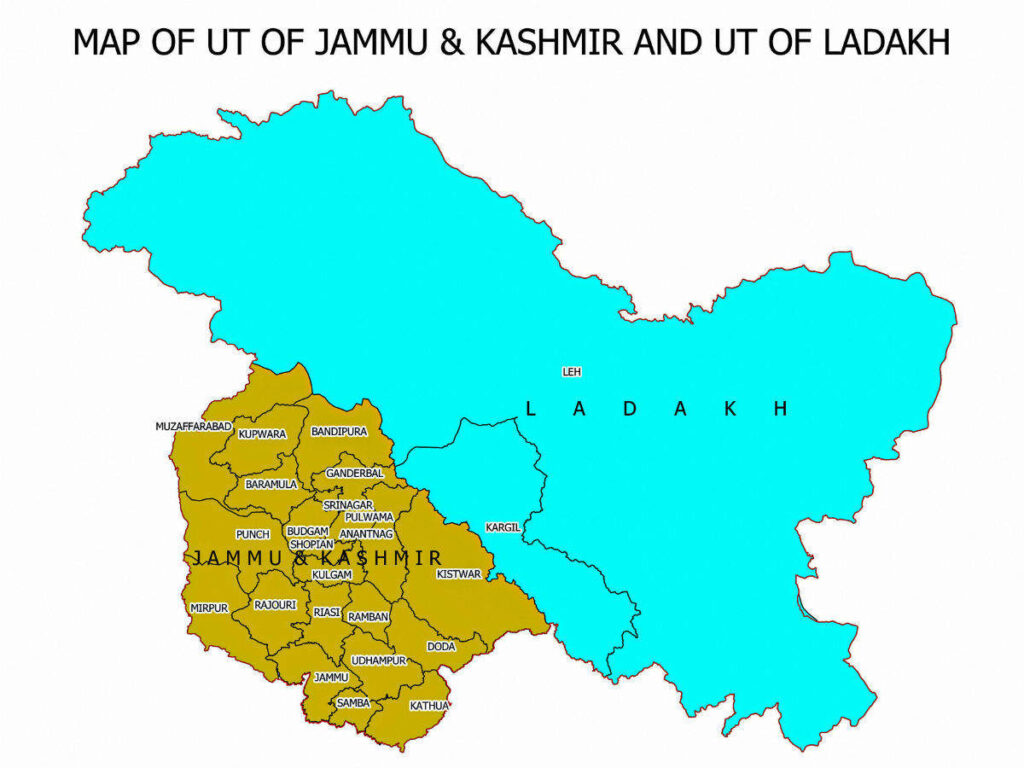
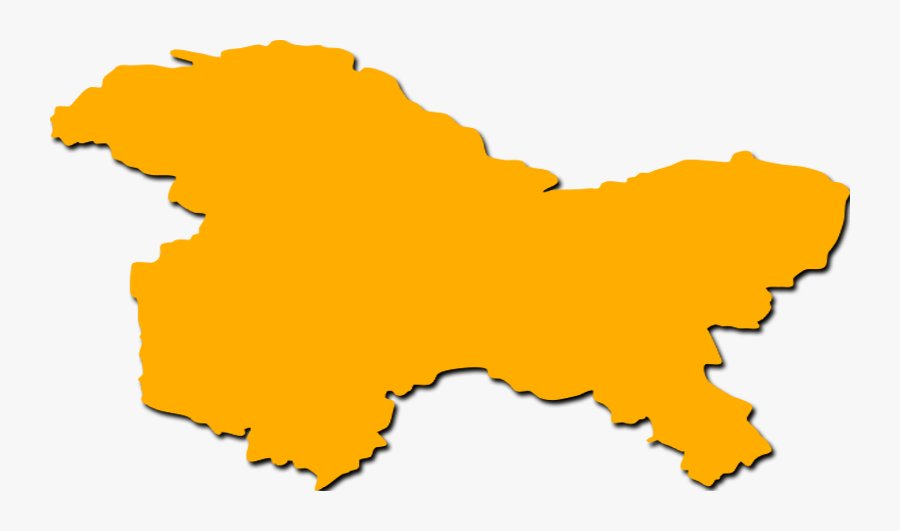
- Beyond all the politics and chaos, the one thing, that stands up is ‘‘KASHMIRIYAT’’ that resides in the heart of every Kashmiri.
- Kashmiriyat is not only an ideology, it is a lifestyle, an aspiration that connects the natives of Jammu and Kashmir with each other under the love for the Mountains, Plains, Waters of the Motherland.
- Kashmiriyat promotes unity and joint Hindu-Muslim Culture, festivals, language, cuisines, clothing, artworks in the region of Jammu and Kashmir.
- Under the banner of Kashmiriyat, the festivals of Hinduism and Islam are celebrated by the adherents of both faiths.
- The noble ideology of Kashmiriyat flourished and was promoted by Kashmiri Sultan Zain – Al – Abidin, the story of the Kashmiri mystic Lal Ded (Also called Laleshwari), in which her body turned into a mound of flowers that was buried by both Hindus and Muslims, serves as an emblem of Kashmiriyat that keeps it alive today.
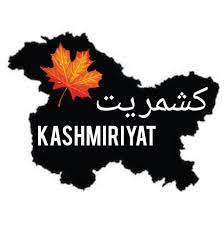
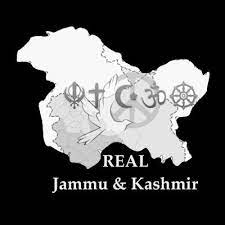
Culture :-
Culture is referred to the lifestyle characteristics and knowledge of a particular group of people, including language, religion, cuisine, social habits, arts, etc.
The culture of Jammu and Kashmir and Ladakh is undoubtedly different but it contributes to making up the perfect blend of Kashmiriyat.
Same as “the Religion of Jammu and Kashmir”, the culture of Jammu and Kashmir needs to be looked at and understood at separate levels.
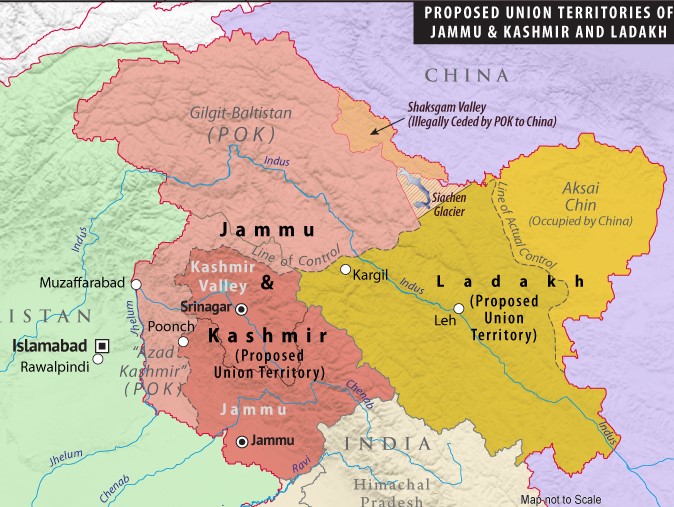
Jammu
(People , languages , ethnicities and Festivals)
Jammu is revenue and administrative region within Jammu and Kashmir, a UT of India.
Jammu regions consist of districts – Jammu, Doda, Kathua, Ramban, Rasi, Kishtwar, Poonch, Rajori, Udampur and Samba.
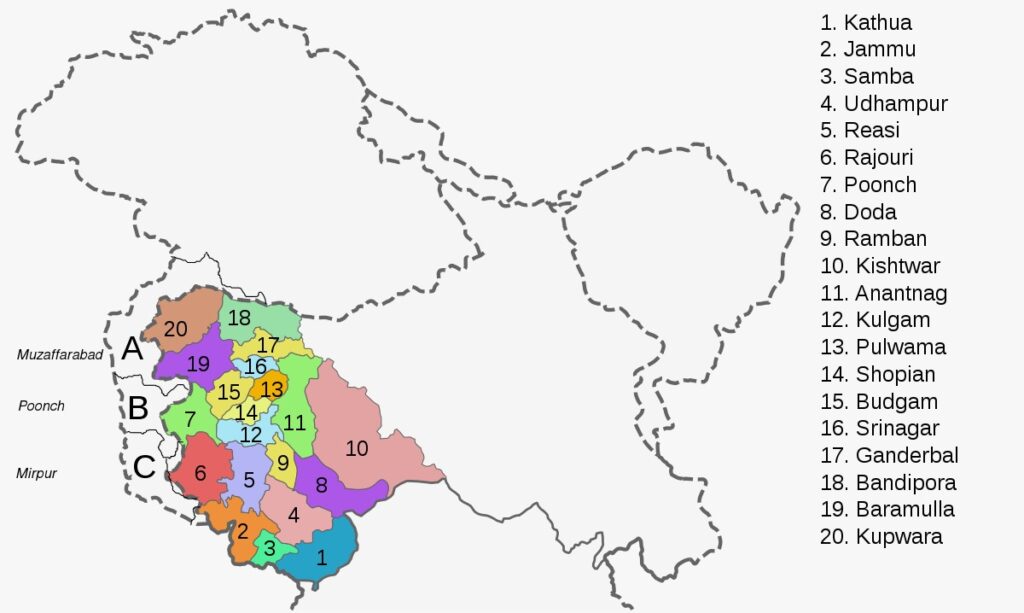
The region of Jammu is separated by Kashmir by the Pir Panjal Range and most of the land area in Jammu is hilly or mountainous.
Jammu is also known as the “City of Temples” as it has many temples and shrines with some of the most important Hindu shrines such as Vaishno Devi. Jammu is a major pilgrimage center for Hindus.


Religion
- Hindus are in a majority in Jammu while Muslims and Sikhs enjoy a strong cultural heritage in the religion.
People, Language
- With a population of 5,350,811 Jammu division is home to a diversity of heritages and cultures itself.
=> With diverse heritage comes diversity in every aspect of life, Jammu division is the bearer of more than 7 languages including:
- Dogra
- Kashmiri
- Pahari
- Pothwari
- Punjabi
- Hindi
- Urdu
=> And the official language consists of:
- Kashmiri
- Dogri
- Urdu
- Hindi
- English
Festivals
=> Jammu witnesses a lot of zest and fervor throughout the year by virtue of festivals. Some festivals celebrated in Jammu are:
1. Lohri:-
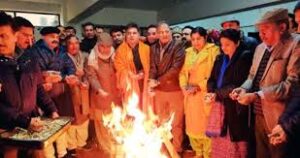
This festival is celebrated a day before Makar Sankranti and heralds the culmination of cold weather.
Lohri is celebrated with some additional traditions in Dogra households like Chajja making, Hiran Dance, Dandaras, and preparing Lohri garlands.
Hawans are prepared in nearly every household and temple.
2. Makar Sankranti (Uttarain):-
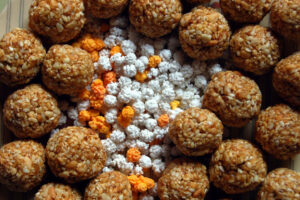
This festival is celebrated with the best in the Division with flying kites all over the sky.
Among Dogras, there is a tradition of “Mansana” {Charity} of Khichidi of Maah Dal.
There is also celebrated as the birth anniversary of ‘Baba Amboj’, a local deity in the Jammu region.
3. Holi:-
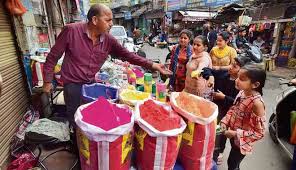
Holi is celebrated in a traditional way in India on the day of Holi, people enjoy playing with colors.
A Dogra sweet dish “Khaste” is prepared on this day.
A three-day fair is organized at Narsingh Dev Temple in Kathua.
4. Ram Navmi ( Rama Navami):-
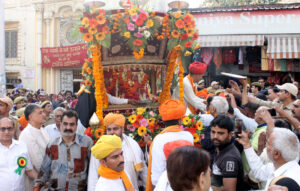
- Ram Navami is celebrated with zest and fervor across the Jammu Division, celebrating the birth of Shri Rama.
5. Shivratri (Herath):-
It is a festival of great significance for Hindus all over the world, especially Kashmir Pandits (Hindus) of Kashmir origin who have settled in Jammu.

Mahashivratri On this day, Lord Shiva and his spouse Parvati are worshipped with great devotion everywhere in India.
=> Other festivals celebrated in Jammu Division comprises of:
- Bhugga (Samkashti Chaturthi)
- Basant Panchami.
- Kam Chauth (Gauri Chaturthi).
- Basoa (Vishua) or Baisakhi (Mesha Sankranti).
- Bahu Mela.
- Chaitre Chandash.
- Purmandal Mela.
- Dhamdeh
- Rutt Raahda & Sakolade.
- Krishna Jammashtani.
- Bacch Dua and Drubadi.
- Singh Sankrat.
- Tulsi Puja and panj Bhikham.
- Jhiro Mela
- Navratri Festival.
- Rath Kherda Mela.
Cuisine:-
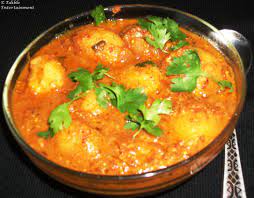 => Jammu city is known for its unique cuisine and the Dogra dishes are famous all around India.
=> Jammu city is known for its unique cuisine and the Dogra dishes are famous all around India.
Aloo Dam, Kashmiri Pulao, and Batisa are the prominent dishes of the region.
Jammu is famous for its mouth-watering chocolate Baarfi, Sund Panjeeri, Patisa, and Rajma all over India.

Kalaadi Kalaadi (a processed cheese) is a mother delicariesy of Jammu.
Some famous Dogri dishes from Jammu like Ambal, Khatta meat, Khulthein di Dal, Kashmiri Aloo Dum, Dal Palt, Maa da Madra and Auriya are also a part of the cuisine of this region.
Pickles of Karsod, Girgle, Zimikand, Tayoo, Seyoo, and Potatoes are also made.

Gol Gappas Traditional foods of Jammu are morel, palow, Madra, Auriya, Maani, Khameera, etc.
Jammu is also famous for Gol Gappas, Kachaalo, Gulgule, Rajma Kulche, etc.
Dressing:-
The traditional dress of Jammu mainly comprises a Dupatta, Tunic, even Churidar, and Salvar along with a cap. This tunic is then tied around the waist.
Men also wear the same but for better fitting, they were kurtas and Pajamas.

Moreover, Kammarbands and turbans are meant for elders to wear.
Art:-


- Jammu division is also well known for its captivating artwork in form of the “Basohli” paintings and “Phoolkaari”
Kashmir (Indian Administration) :
(People , languages , ethnicities and Festivals)
=> With a total population of 6,907,622 people, the Kashmir division is comprised of 10 districts namely :
Anantnag, Baramulla, Budgam, Bandipora, Ganderbal, Kupwara, Kulgam, Pulwama, Shopian, and Srinagar.
- The capital of the Kashmir division is Srinagar.
=> The languages are spoken in Kashmir division by the different ethnic groups of Kashmir viz. Kashmiri, Pahari people, Gujjar, and Shina are:
- Kashmiri
- Urdu
- Hindi
- English
- Pahari
- Gojri
- Shina
The Kashmiri culture is the blend of different religious and cultural influences ranging from religions like Hinduism, Buddhism, and Islam and from cultures like Persian culture as well as from the central Asian cultures.
With the followers from Islam (96.41%), Hinduism (2.45%) , Sikhism (0.81%), and Christianity, Kashmir witnesses a lot of diversity in festivals celebrated in the valley.
Some Festivals Celebrated in Kashmir Are :-
Kashmiri Hindu Festivals:-
1. Herath (Shivratri): This festival is of utmost importance in the valley.
- The Kashmiri pandits celebrate this day by worshipping Lord Shiva and his spouse Parvati.
- This festival is not only limited to Hindus. On this day, Muslims wish Hindus and Hindus present walnuts to Muslims which are accepted wholeheartedly.
2. Khetchmaavas
3. Navreh
4. Zyeth atham
5. Tiky tsoram
6. Pan
7. Gaad batt.
Kashmiri Muslim Festivals:-
1. Eid-al-Adha: on this day Muslims sacrifice animals in the name of Allah and distribute the meat among relatives, neighbors, and poor people. Eid starts with a morning prayer
‘Eid namaz’. Various dishes are prepared on this occasion and children to receive money from the elders in form of ‘Eidi’.
2. Eid-al-Fitr: It is also known as ‘lokut eid’ in Kashmir. It also starts with a special .morning prayer “Eid namaz”.
- People celebrate this day with zest and spread joy.
3. Eid-al-Ghadir: this festival is celebrated majorly by Shia Muslims in the valley.
4. Shab-e-Barat
5. Shab-e-Mehraj
6. Eid-e-Milad
7. Nauroz
Christmas :-
- Moreover, Christmas and Sikh festivals are also celebrated in the valley with mutual participation from all ethnicities.
Kashmiri Artwork And Handicrafts
Kashmir is indeed a heaven, not just in terms of its beautiful scenic view but it is a heaven also for culture lovers and traditional praisers.
With its varied, rich, and unique artwork, Kashmir is a place where art reflects from food, clothes, jewelry, and basically from everything.
=> Some of the captivating handicraft skills of Kashmir includes:
1.Weaving
- Carpet weaving
- paper machine
- Wood carving and Crafting
- Silverware work
- Carpet marking
- Kashmir is one of the best tourist destinations in the world, leaving alone memories, tourists have a variety of artwork items to take along from Kashmir as an authentic essence of Kashmir with them forever.
=> Some masterpieces of Kashmiri artwork include:-
1. Decorative paper mache items | 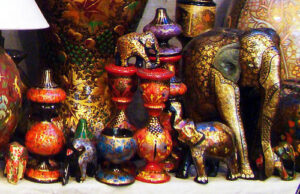 |
2. Ancient jewelry items. | 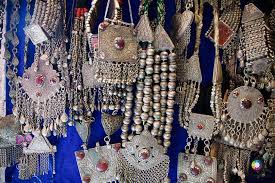 |
3. Carpets and rugs |  |
4. Wood carvings and furniture. |  |
5. Pashmina shawls |  |
Cuisines:-
The staple food of Kashmir is rice since ancient times.
Moreover, Kashmiri’s are voracious non-vegetarians.
Even the main cuisine of Kashmir ‘WAZWAN’ is a course of mostly seven non-veg dishes which is especially served as a feast in Kashmiri weddings with rice.

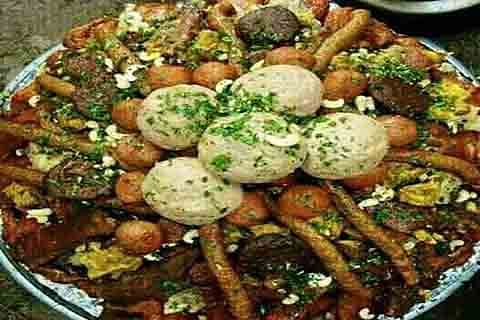
Despite being Brahmins, most Kashmiri Hindus are also meat-eaters.
Besides the delicious dishes, Kashmir is also known for its rich bakery and beverage tradition.
=> Some important bakery items from Kashmir include :-
1. Tsout |  |
2. Tsochvor | 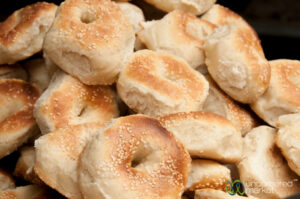 |
3. Lavas |  |
4. Baqerkhayn | 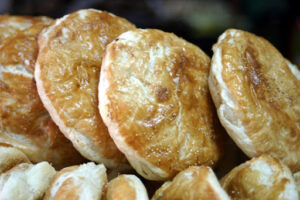 |
5. Girda |  |
6. Shermal | 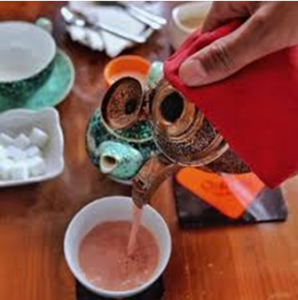 |
7. Kehwa | 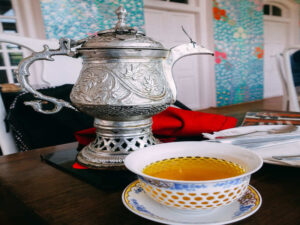 |
Dressing:-
| 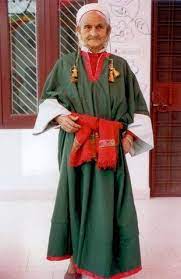 |
|  |
| 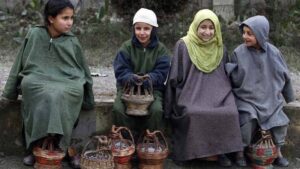 |
|
|
Music and Dance:-
- Kashmir thrives its spirit in form of Sufi music accompanied by special Kashmiri musical instruments like rabab,
| Tumbakh-ner |  |
| Nout , Sitar | 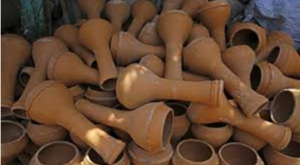 |
‘Rouff’ is a special Kashmiri dance mostly performed by women and girls on special occasions like weddings and eid. |  |
Ladakh
(People, Languages, and Ethnicities)
The traditions and cultures of the Ladakhi people are similar to that of the neighboring Tibet region.
With a population of 274,289 people, the Union territory of Ladakh comprises 2 districts namely – Leh and Kargil.
The spoken languages in the region include Ladakhi, Purgi, Sheena, Urdu, and other local languages.
Ladakh comprises religious inhabitants like Muslims (46%) (mainly Shia Muslims), Tibetan Buddhists (40%), Hindus (12%), and others (2%).
Due to the close relation of Ladakh with Tibet, Ladakh is also known as ‘Little Tibet’.
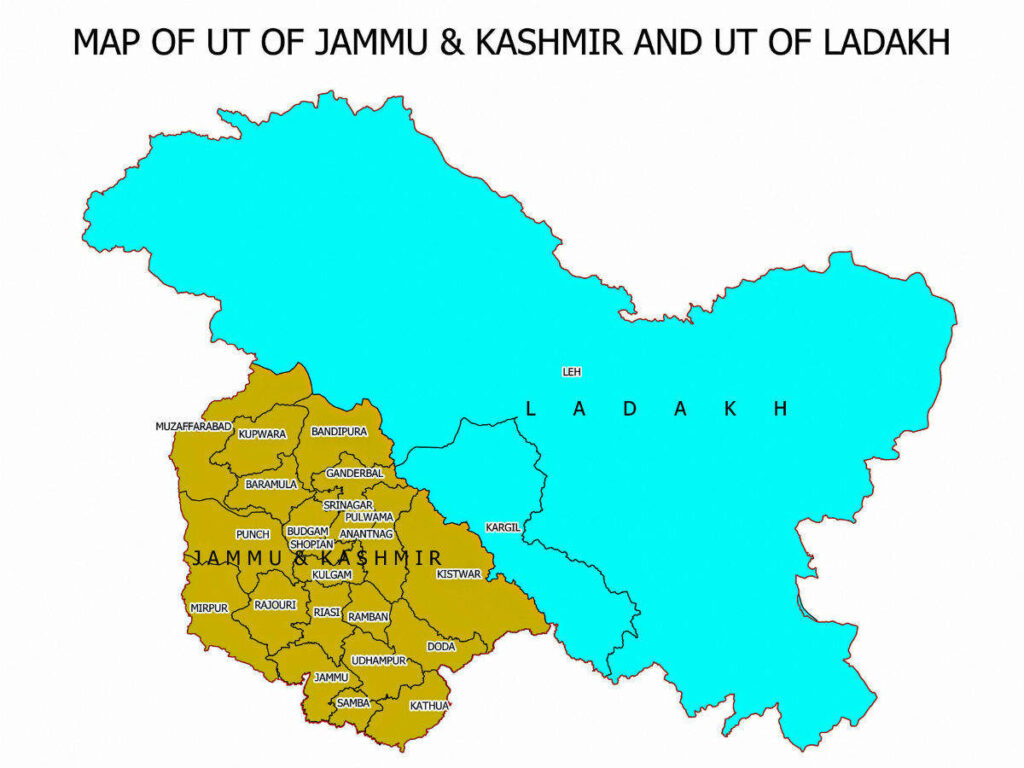
Festivals:-
Ladakh has a rich culture, mostly inspired by Tibetan culture and Buddhism.
With some really colorful and exciting festivals throughout the year accompanied by games like archery, river rafting, camel races, dance performances, and exhibitions like Tangke exhibitions, Ladakh thrives in the spirit of festivals.
=> The most important festivals of Ladakh are:
| Hemis festival | 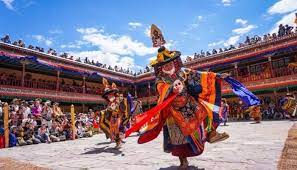 |
| Losar |  |
| Phyang tsedup festival |  |
Sindhu darshan festival | 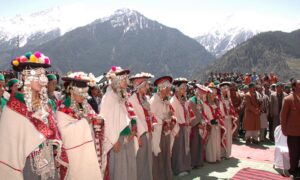 |
| Dosmoche |  |
| Saka Dawa festival |  |
Tak | 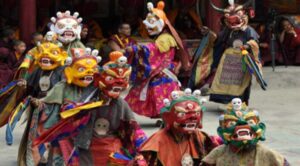 |
Matho Nagrang festival |  |
Music and Dance :-
Ladakh is a land of resourcefulness when it comes to dancing.
Music and dance are an integral part of Ladakh’s culture.
=> Folk music holds an important place in Ladakh accompanied by traditional musical instruments like:-
| Lingbu (Flute) |  |
| Damyan (String Instrument) |  |
Pivang , khakong (Sitar), (Daph Dafli) , Daman , Surna and Piulang (Shehnai and Drum)
=> Some popular dance forms of Ladakh include :-
- Khatok Chenmo and Kompa Tsum – Tsak chaams.
Cuisine :-
- Like music, dance, and festivals; Ladakhi cuisine is also very much inspired by Tibetan cuisine.
=> Some prominent dishes of Ladakh include noodles and soups like :-
1. Thukpa | 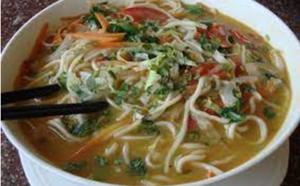 |
2. Tsampa | 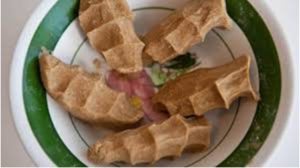 |
3. Skyu | 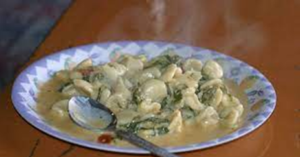 |
4. Chutagi |  |
Affect Of Modernization On The Culture
Today modernization is affecting every sphere of life, it has also had an effect on cultures all over the world and the region of Jammu and Kashmir is no exception.
With modernization in the act, people of Jammu and Kashmir have given up on some of their traditional ways of living and their local mother tongues.
But it is a relief that many steps on the community as well as on the state level are being taken to revive the culture of the region.
The government is organizing numerous artwork exhibitions promoting regional art and introducing local languages in school curriculums.
Youngsters are playing an important and major role in the revival by promoting their local languages and culture on different platforms via music, poetry, social media, writings, etc.
13 Interesting Facts About Jammu And Kashmir
The UT of Jammu and Kashmir has the potential to generate around 20,000 megawatts of hydel power but produces only about 2,439 megawatts.
Jammu and Kashmir have 2 capitals – Srinagar as the summer capital and Jammu as the winter capital for 6 months each.
The government offices shift from Srinagar to Jammu on the commencement of the winter season. This movement is called the ‘Darbar move’.
Kashmiri Saffron (Zaafran) is considered to be of the best quality and is also the most expensive in the world.
Kashmir region is the largest and the most militarized territorial dispute currently on the planet.
Kashmir is the only place in the world to have a floating post office, it is a houseboat in Dal Lake.
J&K has about 2,104 high-altitude alpine lakes.
Jammu and Kashmir region is home to many rare species of animals like two-humped Bactrian camels in Ladakh and Hangul (a type of deer) in Kashmir.
Kashmir has been ranked as the 2nd most romantic destination to visit in the world.
Jammu and Kashmir is the only state in the country where prostitution was legal under the Public ProstitutesRegistration Rules, 1921.
Kashmir unlike the rest of the country, have 6 seasons:–
- Sounth (spring)
- Grishum (hot season)
- Wahrath (rainy season)
- Harudh (autumn)
- Wande (cold season)
- Shishur (very cold season)
Ladakh is the largest and the 2nd least Union territory of India.
Ladakh hosts a special festival for the sake of playing Ladakhi polo differs from the international formal in player count and duration.



